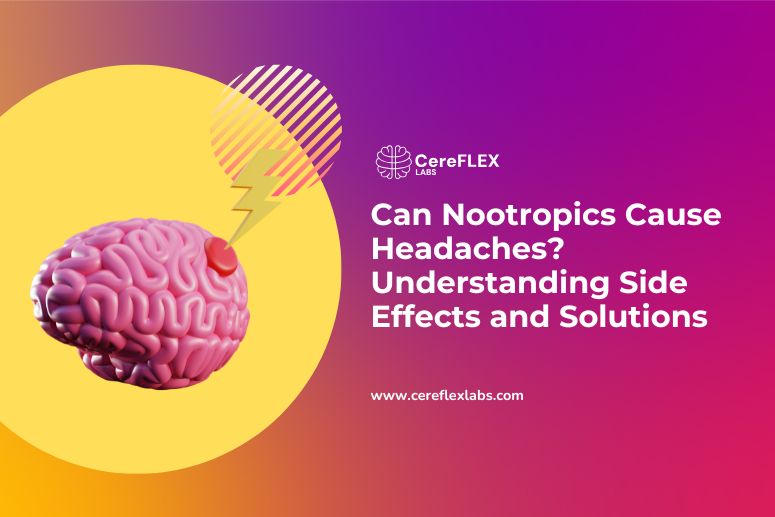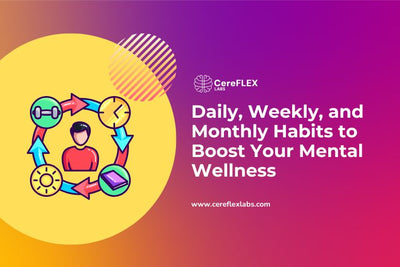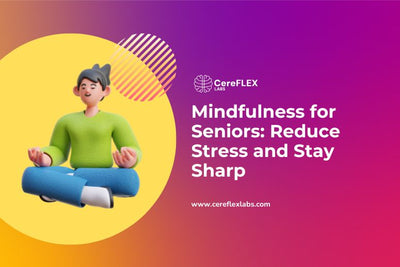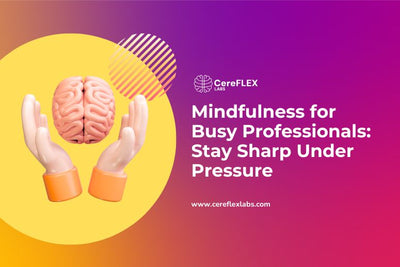Nootropics—natural and synthetic substances that support brain performance—are gaining traction among professionals, students, athletes, and wellness seekers. For those looking to stay sharp at work or improve mental clarity for training or recovery, these compounds offer promising cognitive benefits.
But they’re not without their quirks.
For some users, headaches can arise shortly after starting or stacking certain nootropics. These can range from mild tension to sharper, pulsing discomfort—often leaving users confused about the cause.
The truth? Most nootropic-related headaches aren’t caused by the ingredients themselves, but rather how they interact with your brain chemistry, hydration levels, or nutrient intake. The good news is, they’re typically preventable—with a few smart adjustments.
Let’s explore what might be behind your nootropic headaches—and what you can do to manage them while continuing to support your cognitive health.
Here is the Quick Answer |
|
Yes, nootropics may contribute to headaches—especially when factors like dehydration, choline imbalance, overstimulation, or high dosing are involved. Racetam-class compounds are frequent culprits, but side effects are often mild and manageable. Start low, stay hydrated, and consider adding a balanced choline source to your routine. |

Can nootropics cause headaches?
Yes, some people do experience headaches when using nootropics—and it’s one of the most frequently reported side effects in the nootropic community.
That said, these headaches aren’t usually a cause for concern. They’re more likely related to how your brain responds to changes in neurotransmitters—especially acetylcholine—than to the nootropics themselves.
In many cases, the real issue is an imbalance: too much stimulation, not enough nutritional support, or the wrong mix of compounds in a supplement stack.
Factors like dosage, hydration, and timing can also play a role. The good news? Most nootropic headaches are temporary and can be managed—or avoided—by making a few simple changes to your routine.
Why Nootropics Cause Headaches: 5 Common Triggers
Understanding what causes nootropic-related headaches is the first step toward avoiding them—without giving up the mental clarity and focus many people seek. These side effects are rarely serious, and in most cases, they result from how nootropics interact with your brain and body.
Here are the most common factors that can contribute to nootropic headaches:

1. Acetylcholine Imbalance
Many nootropics—especially racetams like piracetam, aniracetam, or oxiracetam—are thought to increase the brain’s demand for acetylcholine, a key neurotransmitter tied to learning and memory.
When this demand rises and the body can’t keep up, it may lead to tension or pressure headaches, particularly around the temples or forehead.
2. Choline Mismanagement
Choline is a dietary nutrient that supports acetylcholine production. Without enough of it, your brain may struggle to keep neurotransmitter levels in balance when using racetams or similar compounds.
On the flip side, taking too much supplemental choline can also be a problem—leading to overstimulation and, sometimes, headaches. Finding the right dose is key.
A moderate intake of high-quality choline sources like Alpha-GPC or Citicoline may help restore balance. Start low and adjust gradually to find your sweet spot.
3. Changes in Blood Flow
The brain is highly sensitive to changes in cerebral blood flow (CBF). Certain nootropics (especially stimulant-based ones like modafinil or caffeine) may cause vasoconstriction, the narrowing of blood vessels, which can reduce blood supply to certain regions of the brain. This restriction can lead to tension-type or pressure headaches
On the other hand, some nootropics like ginkgo biloba are actually used to increase blood flow to the brain. However, even these can cause headaches if the change in CBF is too sudden or if blood vessels are already sensitive.

4. Overstimulation or Stack Synergy Issues
Stacking multiple nootropics—or using high doses of a single one—can overstimulate your nervous system. This might initially feel like a boost in energy or focus, but can quickly shift into fatigue, brain fog, or headaches if your system becomes overloaded.
Careful dosing and simple stack combinations are often more effective—and easier on your brain.
5. Lifestyle Factors That Compound Symptoms
Sometimes, the real culprit isn’t the nootropic itself, but what’s happening in the background. Common lifestyle-related triggers include:
- Dehydration: Many stimulants increase fluid loss or suppress thirst.
- Sleep deprivation or high stress: These weaken your brain’s resilience.
- Poor diet: Deficiencies in magnesium, B vitamins, or electrolytes can amplify side effects.
Tuning your habits can significantly reduce the likelihood of headaches—whether or not you use nootropics.
How to Prevent or Manage Nootropic Headaches
If nootropics are giving you headaches, you don’t necessarily need to stop using them. A few thoughtful tweaks—based on how your body responds—can often make a meaningful difference.

1. Add a Choline Source (But Not Too Much)
When using racetams, your brain may burn through choline faster than usual. Supplementing with a choline source like Alpha-GPC or Citicoline may help maintain a healthier neurotransmitter balance and reduce tension-related headaches.
Start with a low dose and increase gradually to avoid overstimulation—too much choline can cause problems too. The goal is balance, not overload.
2. Adjust Your Dosage Slowly
More isn’t always better—especially when starting a new nootropic.
If you’re experiencing side effects, consider lowering the dose. Let your brain ease into the shift rather than pushing it to adapt all at once. A “start low, go slow” approach can improve both comfort and results.
3. Stay Consistently Hydrated
Dehydration is a common trigger—especially with stimulant-based nootropics like modafinil or caffeine.
- Aim to drink at least 3 litres (~100 oz) of water daily.
- Use smartphone reminders or tracking apps if you tend to forget.
- Add electrolytes through beverages like coconut water, Pedialyte, or sugar-free sports drinks.
4. Follow a Cycling Routine
Using nootropics daily without breaks may lead to tolerance, fatigue, or recurring headaches.
Many users benefit from cycling protocols—like 5 days on, 2 days off, or taking a full week off per month. This gives your nervous system time to reset and reduces the chance of side effects over time.
5. Keep a Supplement Journal
Tracking your supplement use helps you identify patterns.
Record what you take, how much, when, and how you feel afterward. You might discover that a certain compound only triggers headaches under specific conditions—like fasting, poor sleep, or stacking it with caffeine.

6. Build Supportive Habits
Your overall wellness plays a huge role in how you tolerate nootropics. Consider:
- A diet rich in magnesium, B vitamins, omega-3s, and antioxidants.
- Prioritizing quality sleep and stress management.
- Regular light activity to promote blood flow and brain oxygenation.
Good habits support your stack—and your brain. For more strategies, explore these daily habits that enhance nootropic results to support brain health and make your stack work smarter.
7. Choose Gentle Formulas
If you’re headache-prone, stick with low-stimulation nootropics.
Natural ingredients like L-theanine, Bacopa monnieri, Rhodiola rosea, or Cereflex Labs’ AM/PM protocol are often easier on the system while still supporting memory, focus, and recovery.
Smart, Balanced Cognitive Support with CereFLEX Labs’ AM/PM Protocol
Some nootropics can feel too intense—causing overstimulation, energy crashes, or even headaches. That’s why CereFLEX Labs, based in West Vancouver, BC, developed the AM/PM Brain Protocol: a two-part system designed for well-rounded daily brain support.
Formulated with input from health professionals and researchers, the AM/PM protocol aims to support cognitive clarity, mental recovery, and long-term brain wellness—without overwhelming your nervous system.
AM: Brain Morning Formula
The AM formula is crafted to help you start your day with clear focus—without jitters. It combines natural ingredients that are used to support circulation, memory, and alertness in a balanced way, making it a popular choice among professionals and athletes.
PM: Cognitive Support Evening Formula
The PM formula works while you rest, supporting relaxation and recovery. It includes ingredients traditionally used to help protect brain cells from oxidative stress and encourage healthy sleep patterns—without relying on sedatives.
This system is designed for adults seeking gentle, consistent support—whether you’re optimizing daily focus or recovering from mental strain. Always follow product instructions and consult a health professional before starting any new supplement.
Conclusion: Managing Nootropic Headaches Starts With Smarter Stacking
Headaches linked to nootropic use are relatively common—but in most cases, they’re avoidable. Whether it’s dehydration, choline imbalance, or overstimulation from stacking, these triggers often respond well to small, thoughtful changes.
Pay attention to your body’s signals. Adjust your dose, stay hydrated, and consider supportive nutrients to help your brain adapt more comfortably.
If you’re seeking daily cognitive support without harsh side effects, consider a balanced approach. The CereFLEX Labs AM/PM Protocol is developed in Canada with a science-informed formula to support focus, recovery, and long-term mental performance—without overstimulating your system.
As always, speak with a qualified health professional before starting any new supplement regimen.






